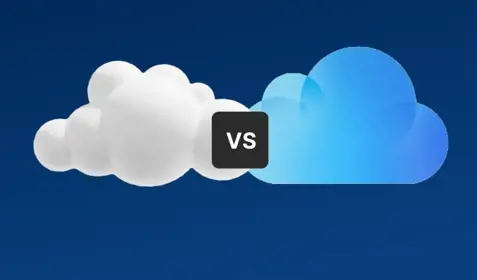Seventy-six percent of respondents to Gartner’s IT Disaster Recovery Trends and Benchmarks survey reported an incident during the past two years that required DR. More than 50% reported at least two incidents.
Having a comprehensive backup and recovery plan in place can ensure business continuity during times of disaster, but traditional DR can be expensive and difficult to manage.
Hiring a service provider to implement your disaster recovery can ensure your company gets back to business quickly while simplifying the process and reducing overhead costs.
The challenges with traditional disaster recovery
Traditional DR, which requires your company to run a secondary environment for backup and recovery, can be an effective solution. However, it has major drawbacks, especially for small to medium-sized businesses.
- It’s too expensive for many businesses. Maintaining a secondary failover site is costly. Requirements like hardware, cooling, rent, staffing, building security, and a host of other expenses add up.
- It uses too many IT resources. IT administrators are tasked with managing and maintaining these secondary environments, whether they’re in a physical location or in the cloud. The larger and more complex they are, the more time-consuming their daily tasks become.
Why consider DRaaS for your business
With DRaaS, organizations don’t have to own their own outside servers and maintain those secondary environments. They also don’t have to worry about managing the recovery after a natural disaster, cyberattack, or fire.
When outages happen, DRaaS providers orchestrate the entire recovery process so you can focus on getting the business side of things back up and running.
Here are some of the key benefits:
Reduced DR costs
Using a DRaaS provider eliminates several expenses like paying for a secondary data center, the monthly costs of keeping it running, and the software and equipment. It also removes the cost of extra staffing.
Fewer IT resources spent on DR
DRaaS can be deployed within hours or days (depending on the number of servers and the exact DRaaS solution your vendor offers) as compared to the weeks or months it can take to build a secondary disaster recovery site. By reducing complexity and simplifying the DR solution with a single provider, businesses and their IT groups save a tremendous amount of time compared to managing their own DR site.
This is especially helpful for businesses with limited IT resources, as they can spend those resources in areas that enhance the business rather than maintain it.
A comprehensive DR solution
Many times companies who implement their own disaster recovery site have to start by protecting the most critical servers first. Some businesses are never able to protect all their servers. DRaaS is more affordable than traditional DR, which allows companies to protect all of their servers (physical and virtual) within a reasonable time frame and budget.
Regular testing
A DR system is only as good as its last test, but running those tests takes time and can disrupt business operations. DRaaS can test failover and recoverability in the background without disruption or consuming organizations' administrative bandwidth.
Compliance
A good DRaaS solution will have reporting and documentation capabilities to ensure DR plans are able to meet SLAs and regulatory requirements. It will make adjustments when or if compliance needs change.
Flexibility
Many vendors offer various levels of service based on the client’s needs. Vendors may offer self-service DRaaS where most of the failover and recovery is handled by the client or white-glove service with various SLAs in place where the vendor creates a customized data protection and recovery plan. This provides organizations with options for their DR strategy depending on their recovery time objectives (RTOs) and server backup needs.
DRaaS providers make it easy
Building and maintaining a secondary DR site can be both expensive and complex. DRaaS takes the cost and resource burden of managing a secondary environment off your hands.
DRaaS solutions like Carbonite Cloud Disaster Recovery, eliminates the burden of DR for the customer and provide a white-glove service for managing data, recovery plans and workflows. With various SLA options, organizations have the flexibility to choose the DR plan that works best for them or mix and match based on their needs. With regular tests, reports, and around-the-clock support, you can have confidence in your company’s ability to quickly recover from a disaster with minimal downtime.
Visit our DRaaS page to learn more about how to improve your organization’s cyber resiliency.








